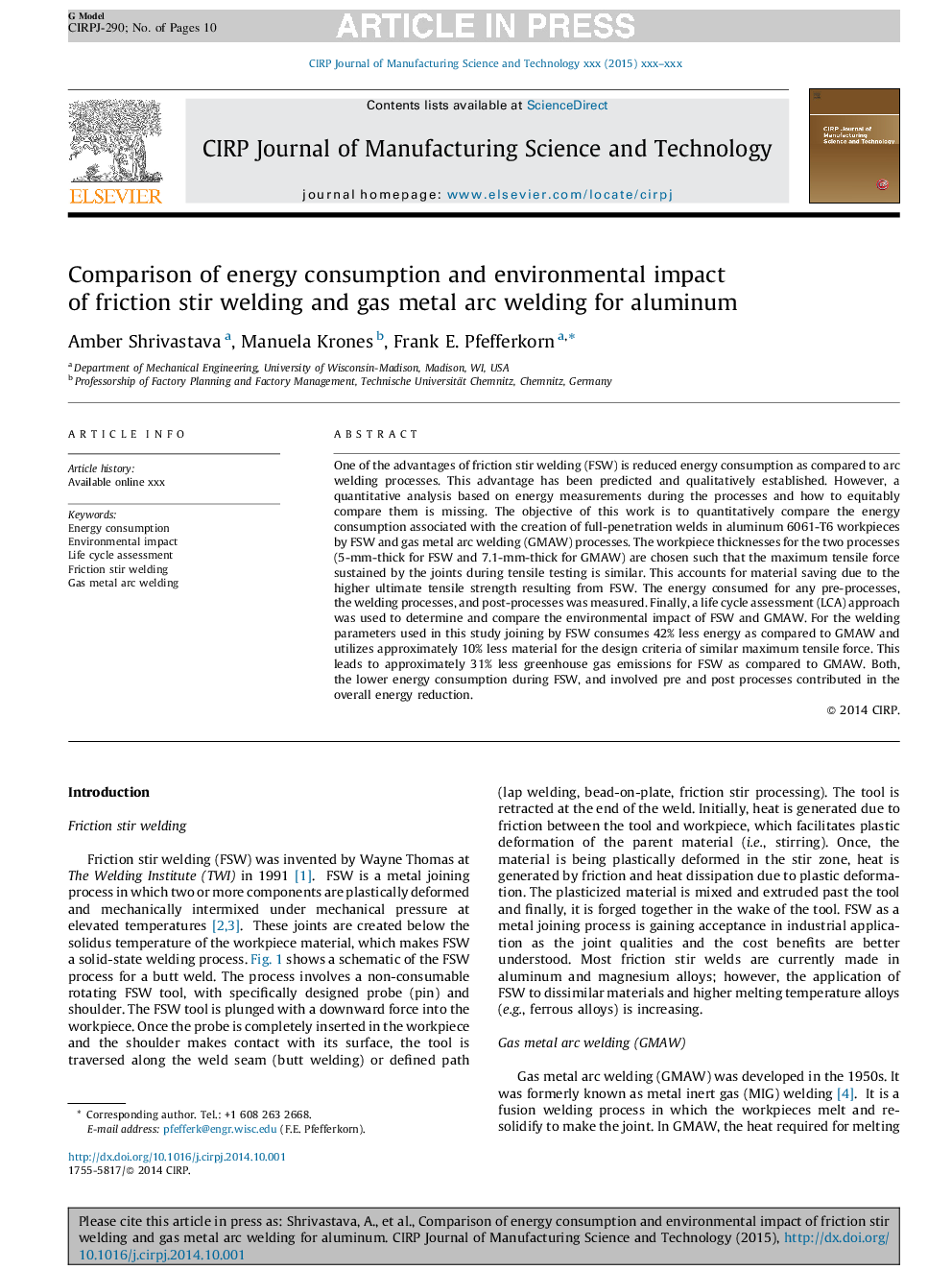| Article ID | Journal | Published Year | Pages | File Type |
|---|---|---|---|---|
| 8038998 | CIRP Journal of Manufacturing Science and Technology | 2015 | 10 Pages |
Abstract
One of the advantages of friction stir welding (FSW) is reduced energy consumption as compared to arc welding processes. This advantage has been predicted and qualitatively established. However, a quantitative analysis based on energy measurements during the processes and how to equitably compare them is missing. The objective of this work is to quantitatively compare the energy consumption associated with the creation of full-penetration welds in aluminum 6061-T6 workpieces by FSW and gas metal arc welding (GMAW) processes. The workpiece thicknesses for the two processes (5-mm-thick for FSW and 7.1-mm-thick for GMAW) are chosen such that the maximum tensile force sustained by the joints during tensile testing is similar. This accounts for material saving due to the higher ultimate tensile strength resulting from FSW. The energy consumed for any pre-processes, the welding processes, and post-processes was measured. Finally, a life cycle assessment (LCA) approach was used to determine and compare the environmental impact of FSW and GMAW. For the welding parameters used in this study joining by FSW consumes 42% less energy as compared to GMAW and utilizes approximately 10% less material for the design criteria of similar maximum tensile force. This leads to approximately 31% less greenhouse gas emissions for FSW as compared to GMAW. Both, the lower energy consumption during FSW, and involved pre and post processes contributed in the overall energy reduction.
Keywords
Related Topics
Physical Sciences and Engineering
Engineering
Industrial and Manufacturing Engineering
Authors
Amber Shrivastava, Manuela Krones, Frank E. Pfefferkorn,
